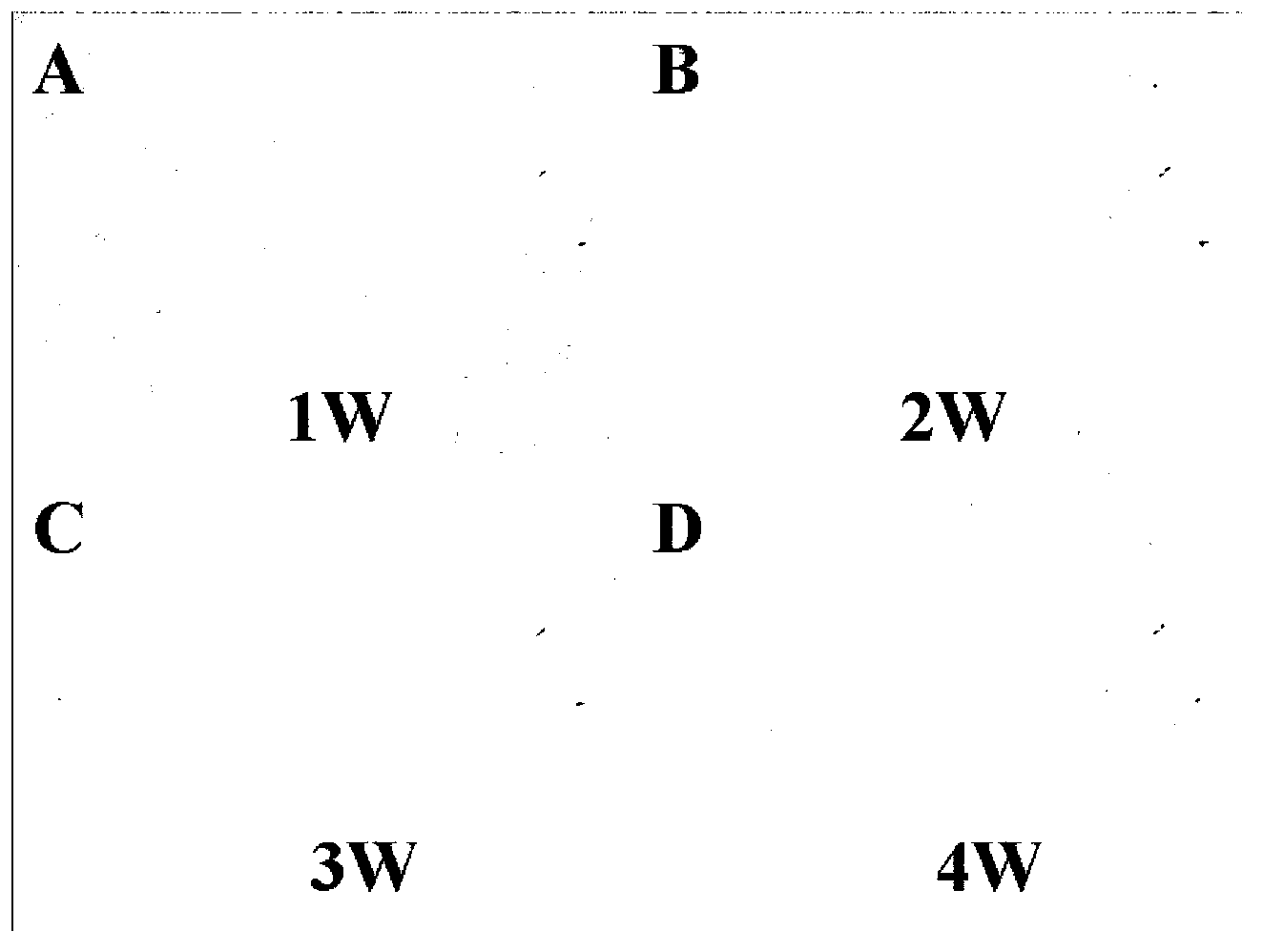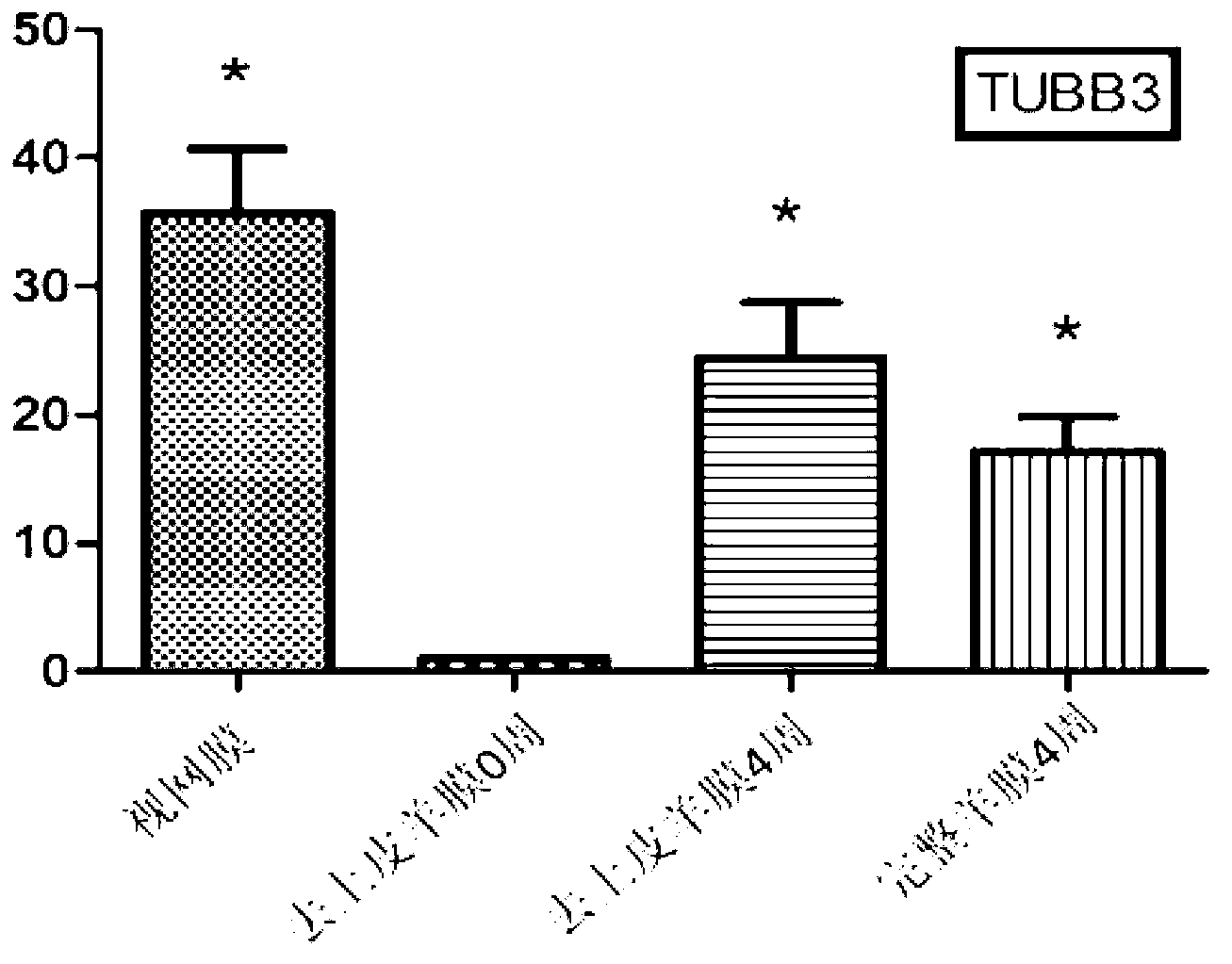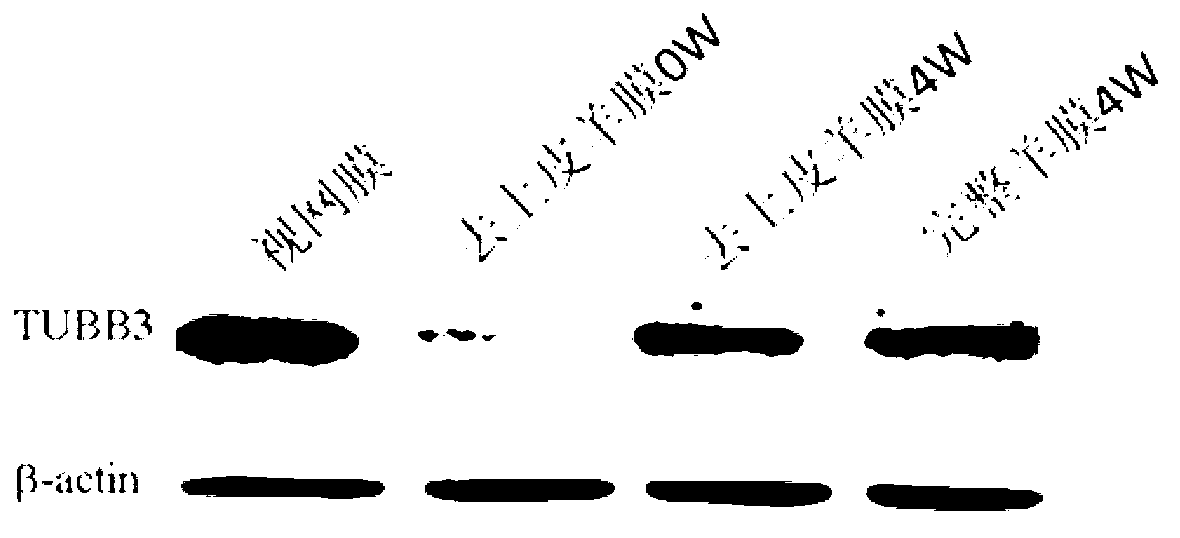Tissue engineering material construction method based on amniotic mesenchymal stem cells
A technology of amniotic mesenchyme and tissue engineering, which is applied in the field of stem cell tissue engineering materials, can solve the problems of insufficient material sources, limited stem cell proliferation and differentiation ability, and easy change of stem cell characteristics, so as to achieve strong cell proliferation and differentiation ability, which is beneficial to Proliferation and differentiation, the effect of facilitating clinical transplantation
- Summary
- Abstract
- Description
- Claims
- Application Information
AI Technical Summary
Problems solved by technology
Method used
Image
Examples
Embodiment Construction
[0035] The following embodiments will further illustrate the present invention in conjunction with the accompanying drawings.
[0036] The present invention uses in vitro tissue culture technology to amplify a large number of amniotic mesenchymal stem cells in situ, and induces them to nerve cells, liver cells, adipocytes, bone cells, chondrocytes, muscle cells, tendon cells, ligaments, cardiomyocytes, and endothelial cells. Directed differentiation of various types of cells, and finally construct tissue engineering materials of corresponding cell types.
[0037] The specific embodiment of the present invention uses amniotic membrane tissue culture in vitro to amplify amniotic mesenchymal stem cells in situ, and induces them to differentiate into nerve cells as an example to further illustrate, but the purpose of this example is only to illustrate the present invention and does not constitute a Limitations on the Invention.
[0038] 1. Acquisition and separation of live amnio...
PUM
| Property | Measurement | Unit |
|---|---|---|
| thickness | aaaaa | aaaaa |
Abstract
Description
Claims
Application Information
 Login to View More
Login to View More - R&D
- Intellectual Property
- Life Sciences
- Materials
- Tech Scout
- Unparalleled Data Quality
- Higher Quality Content
- 60% Fewer Hallucinations
Browse by: Latest US Patents, China's latest patents, Technical Efficacy Thesaurus, Application Domain, Technology Topic, Popular Technical Reports.
© 2025 PatSnap. All rights reserved.Legal|Privacy policy|Modern Slavery Act Transparency Statement|Sitemap|About US| Contact US: help@patsnap.com



